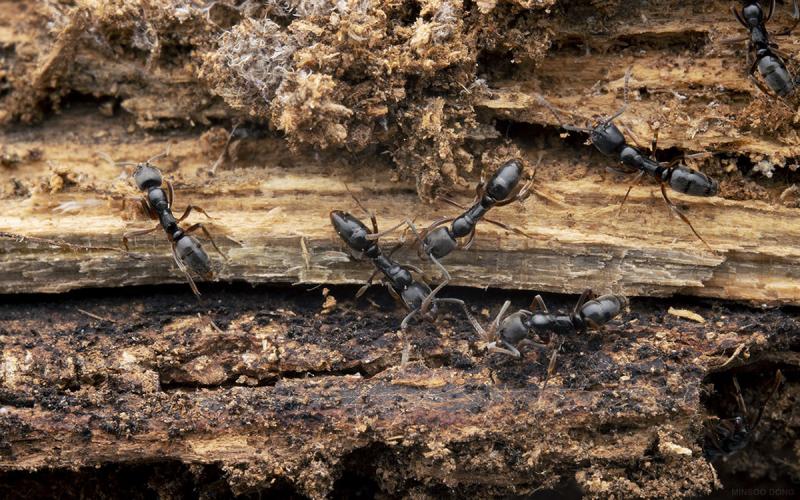
The latest insect to reach the media cycle spotlight is the Asian needle ant (Bracyponera chinensis). Despite reports from major news networks citing that Asian needle ants are in South Dakota, we have no evidence that the ant is established or has ever been documented in the state. According to antmaps.org, a website that is used to establish the known distribution of ant species, the closest confirmed report of the Asian needle ant occurred in Wisconsin. Furthermore, there are no pending records of the Asian needle ant from South Dakota awaiting expert confirmation. As the news networks did not provide sources for their unconfirmed South Dakota sighting, we have to assume that this report was an error. We have reached out to the South Dakota office of USDA APHIS, and were informed that they have not received any reports on this ant species and it is currently not listed as a pest that they are monitoring in South Dakota. In addition, Asian needle ants are also not quarantined by the South Dakota Department of Agriculture and Natural Resources.
The presence of the Asian needle ant in the United States is not recent. It was first documented in 1932 when it was found to be established in Georgia, North Carolina, and Virginia (Smith 1934). The ant colonies were generally found in damp areas including rotten logs, underneath rocks, or other debris that provided a cool damp environment (Smith 1934). Asian needle ants are native to China, Japan, and the Koreas (U.S. Forest Service). By the Federal Register definition, the Asian needle ant is an invasive species. According to AntMaps.org, there are currently 17 states where the Asian needle ant has been confirmed. A report in Texas is pending confirmation, and an indoor introduction has also been reported in Hawaii.
One of the major downsides of the presence of Asian needle ants in areas where it has become established, is that the native ant populations are reduced (Guénard and Dunn 2010). Another issue associated with the Asian needle ant is that the females have an ovipositor that is used to sting potential threats as a defense mechanism (Nelder et al. 2006). In their study, Nelder et al. (2006) determined that most reactions to the stings were localized, with a much smaller number resulting in major reactions. However, there is a risk that individuals with allergies to other stinging insects may experience anaphylactic shock if stung.
South Dakotans should remember that this ant species is not currently present in the state. Fear of the Asian needle ant should not be used as justification to kill existing ants present in lawns or other outdoor areas.
References Cited
- Guénard, B. and R. R. Dunn. 2010. A new (old), invasive ant in the hardwood forests of eastern North America and its potentially widespread impacts PLoS ONE 5: e11614.
- Smith, M. R. 1934. Ponerine ants of the Genus Euponera in the United States. Annals of the Entomological Society of America 4: 557-564.


